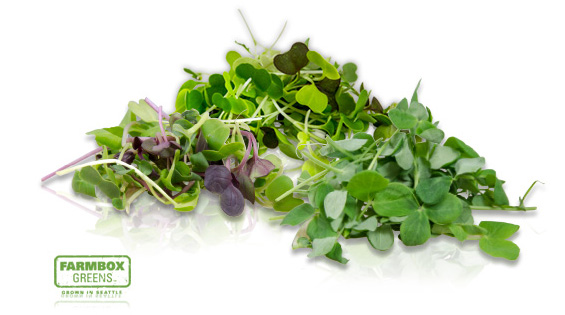
We have no small amount of pride in our hometown of Seattle. There is no shortage of high quality food growers, purveyors, and artisans in this city, but the below is our short list of the places we rely on again and again.
Marx Foods Lower Queen Anne
This might be like voting yourself Prom Queen, but whatever, we’re doing it anyway. Marx Foods is one of the few food retailers that actually taste tests all the products on the shelves. We also stock things that are hard to find, even in Seattle’s abundant specialty food scene – game meats, a huge range of exotic chilies, molecular gastronomy ingredients…plus items you’ve probably never seen before (pinecone bud syrup or buzz buttons, anyone?). Our staff is friendly, knowledgeable, and endearingly nerdy about food.
Uwajimaya
A huge Asian grocery store with especially impressive fresh departments. The produce section is great–a wide range of exotic and tropical items in addition to the usual suspects. They do their meat-cutting in-house, so you can find all sorts of tidbits that you would have to special order at other stores: feet, skin, bones and raw or rendered fat of various animals. The seafood department has live items like tilapia, dungeness crab, geoduck, and oysters.
Pike Place Market
You’re not really a Seattle gourmand until you’ve plumbed the labyrinthine depths of the Pike Place Market. Here’s a short list of our favorite market vendors:
DeLaurenti for their extensive collection of high quality charcuterie, cheese, wine, and pantry goods.
World Spice Merchants is obsessive about keeping their wide array of spices are as fresh as possible. You can buy everything in just the amount you need, instead of the large bottles found at grocery stores.
City Fish may not throw fish at tourists, but it does have excellent, fresh local seafood and fair prices. During uni season they sell whole urchin on the half shell for about a third of the price of a sushi restaurant.
Frank’s Produce has the nicest produce in the market. If they don’t have what you’re looking for, just ask–they can special order your item with a day or two’s notice.
Paris Grocery is a small but well-curated French cheese and wine shop by the same folks who own a (also excellent) local Spanish grocery, The Spanish Table. Their selection of wines and spirits is excellent, including hard-to-find Underberg bitters.
Farmers’ Markets
Seattle has eleven farmers’ markets and they are all great.
Most of the markets are seasonal, but the U-District, Ballard, West Seattle, and Broadway markets are all open year-round. At each one you can expect a full selection of very high quality produce, meat, dairy, baked goods, and prepared foods.
Melrose Market
Counting Melrose Market as one retailer is a bit of a cheat because it consists of several independent vendors under one roof.
There’s Rain Shadow Meats (a full-service butcher specializing in local and sustainably-raised meats), The Calf & Kid (cheese shop that always seems to have the obscure cheese you can’t find elsewhere), Marigold & Mint (organic produce and plants grown on their own farm), and Taylor Shellfish Farms (live shellfish and the best oyster happy hour in Seattle). It combines the convenience of one-stop shopping with the expertise and service of specialty shops. There are also restaurants, a craft cocktail bar, and a home goods shop.
Neighborhood Notables
Pioneer Square
The London Plane
An all-purpose cafe-deli-bakery-pantry-flower-housewares shop by Seattle notable chef Matt Dillon (also the mastermind behind Melrose Market).
The impressive selection of Japanese sakes at this specialty store is carefully curated by the owner, who lived in Japan for several years. You can sit at the bar and talk shop while you sip a sake flight, or simply stop in and let them know what you’re looking for and get a great recommendation.
Capitol Hill
Central Co-op
A great full service grocery focusing on wholesome, sustainable, and local foods. Every time you walk in you’re likely to find a new locally produced product on the shelves. The staff is friendly and delightfully grungy. You don’t have to be a member to shop, but membership has its benefits: special sales, discounts, free workshops and events. Pickle-making workshop? Yes, please!
A nice step-up from the ubiquitous corner store, this small market has all the basics–fresh fruits & vegetables, frozen meats, cheese, pantry staples, wine & beer–plus a tidy selection of prepared foods, locally made specialties, and hardware items. They also have a growler station stocked with 6 local beer taps.
One part apothecary, one part pantry store, Sugarpill is a sweet little shop stocked with items to cure what ails you, whether it’s seasonal allergies or boring cocktails.












